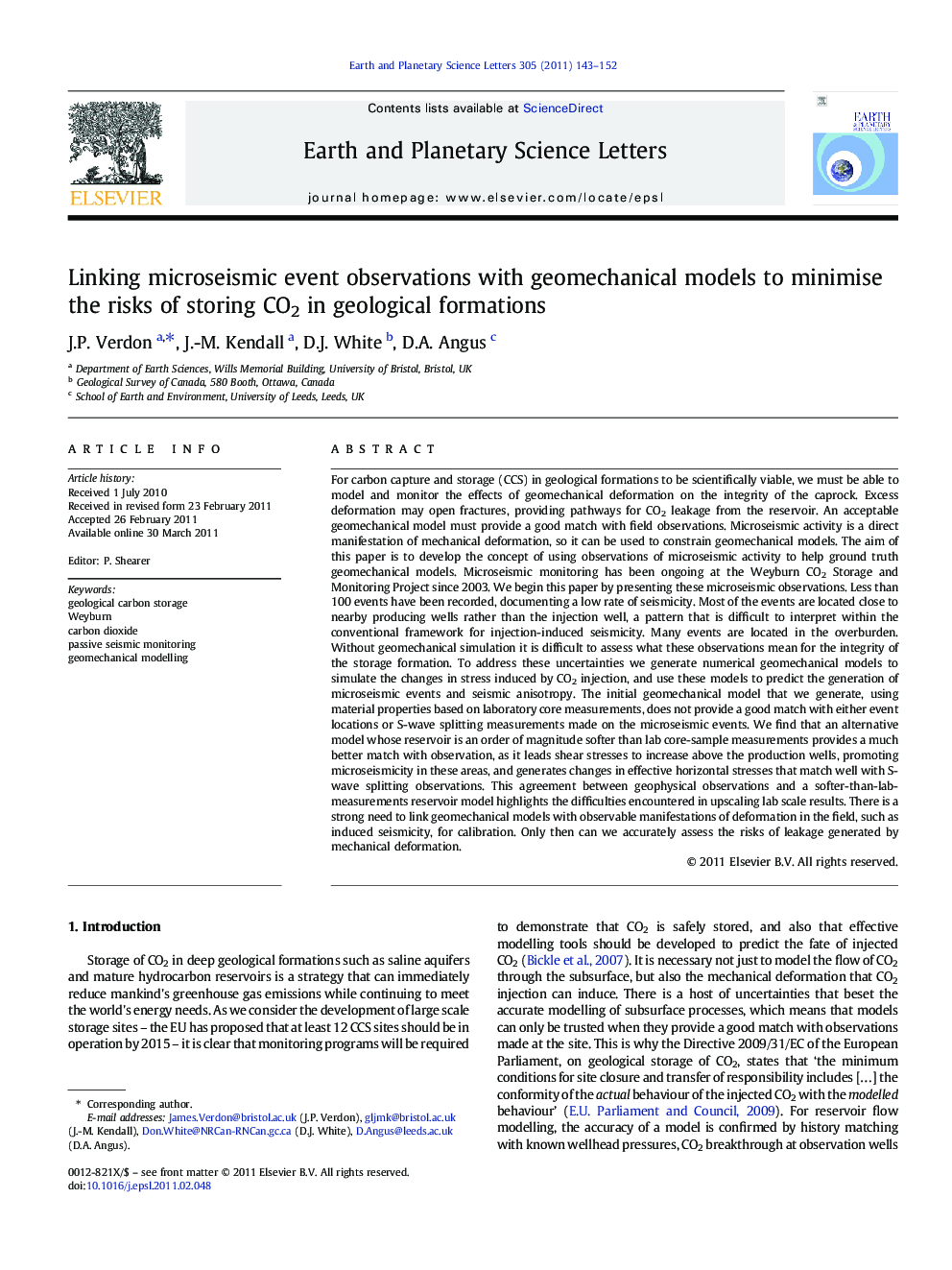| Article ID | Journal | Published Year | Pages | File Type |
|---|---|---|---|---|
| 4677960 | Earth and Planetary Science Letters | 2011 | 10 Pages |
For carbon capture and storage (CCS) in geological formations to be scientifically viable, we must be able to model and monitor the effects of geomechanical deformation on the integrity of the caprock. Excess deformation may open fractures, providing pathways for CO2 leakage from the reservoir. An acceptable geomechanical model must provide a good match with field observations. Microseismic activity is a direct manifestation of mechanical deformation, so it can be used to constrain geomechanical models. The aim of this paper is to develop the concept of using observations of microseismic activity to help ground truth geomechanical models. Microseismic monitoring has been ongoing at the Weyburn CO2 Storage and Monitoring Project since 2003. We begin this paper by presenting these microseismic observations. Less than 100 events have been recorded, documenting a low rate of seismicity. Most of the events are located close to nearby producing wells rather than the injection well, a pattern that is difficult to interpret within the conventional framework for injection-induced seismicity. Many events are located in the overburden. Without geomechanical simulation it is difficult to assess what these observations mean for the integrity of the storage formation. To address these uncertainties we generate numerical geomechanical models to simulate the changes in stress induced by CO2 injection, and use these models to predict the generation of microseismic events and seismic anisotropy. The initial geomechanical model that we generate, using material properties based on laboratory core measurements, does not provide a good match with either event locations or S-wave splitting measurements made on the microseismic events. We find that an alternative model whose reservoir is an order of magnitude softer than lab core-sample measurements provides a much better match with observation, as it leads shear stresses to increase above the production wells, promoting microseismicity in these areas, and generates changes in effective horizontal stresses that match well with S-wave splitting observations. This agreement between geophysical observations and a softer-than-lab-measurements reservoir model highlights the difficulties encountered in upscaling lab scale results. There is a strong need to link geomechanical models with observable manifestations of deformation in the field, such as induced seismicity, for calibration. Only then can we accurately assess the risks of leakage generated by mechanical deformation.
Research Highlights► We analyse microseismic events induced by CO2 injection at the Weyburn CCS site ► We develop a workflow to link microseismicity to geomechanical models of CCS sites ► A geomechanical model is developed to aid interpretation of event locations ► Seismicity predictions made by an initial model do not match observations ► A modified model matches seismicity locations and stress-induced seismic anisotropy
